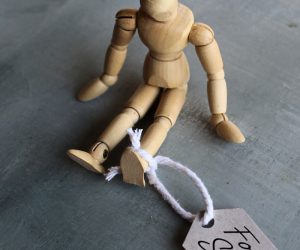 Human trafficking is defined as a crime that involves recruiting and exploiting individuals by means of force, fraud, or coercion for the purposes of commercial sex, labor, or services. After drugs and the arms trade, human trafficking is the third most profitable business for organized crime. While the act of trafficking a person has not changed much over the past 50 years, the way in which criminals identify potential victims has. These changes might be the reason that more attention is getting paid to this horrible crime, because the victims of human trafficking are no longer girls living in marginalized communities. These days adolescent girls with a smartphone and social media profiles are at risk of potentially getting human trafficked.
Human trafficking is defined as a crime that involves recruiting and exploiting individuals by means of force, fraud, or coercion for the purposes of commercial sex, labor, or services. After drugs and the arms trade, human trafficking is the third most profitable business for organized crime. While the act of trafficking a person has not changed much over the past 50 years, the way in which criminals identify potential victims has. These changes might be the reason that more attention is getting paid to this horrible crime, because the victims of human trafficking are no longer girls living in marginalized communities. These days adolescent girls with a smartphone and social media profiles are at risk of potentially getting human trafficked.
How it Used to be
Before the digital revolution, human trafficking in North America was a crime that disproportionately affected marginalized communities, with girls living in poverty and those without citizenship being the largest groups that were affected. Overseas it was a little different, families in rural communities and removed from the organized criminal elements that could be found in the cities had their daughters targeted by members of the same ethnic group who were connected outside of the country.
In the former Yugoslavia, men who had moved to Western Europe for work and established crime connections would return to rural communities and go around spreading tales of riches. These men, and sometimes women, would tell families that their daughters would have a chance at a better life thanks to a desirable bachelor that was looking for a wife, a chance to make more money by working in a foreign country, or provide them an opportunity to explore the world. Parents wanting the best for their daughters would eagerly agree to give those daughters a chance at a better life, which, unknown to them, would eventually turn into a nightmare.
This example is not exclusive to Eastern Europe, girls across Africa, Asia, South America, and any place where the awareness of the prevalence of trafficking had not reached, would experience the same outcome. These communities were very vulnerable, but there were still some barriers, like family permission, that had the potential to foil a plot. However, the digital revolution has seen these predators get direct access to adolescents across the world, and it is something that should have everyone concerned.
How It Is Today
In today’s world, every adolescent with a social media profile is at risk of becoming a victim of human trafficking. To put that in perspective, the PEW Research Centre published a report in 2018 which found that 95% of teens had access to smartphones and that 45% were online on a constant basis. That means there are no barriers, criminals can target and interact with susceptible youth that are over-trusting and hopeful to make a name for themselves in the online world. These days the promises arrive in the form of vacations, A-list events, high-paying cash appearances, and the chance to be famous. All you have to do is visit YouTube and search the impacts of human trafficking to hear and see all those that are affected by this crime of opportunity. This list includes mothers and fathers that work in law enforcement, as judges, and doctors, and it no longer only affects the poor.
A Point Of Resistance
Schools and teachers have the potential to be gamechangers in the fight against human trafficking. After parents, it is teachers that spend the most time with adolescents. The average day for a teacher is filled with a demanding routine and they have access to limited resources themselves. To create a point of resistance at schools, we will need to ensure that teachers are trained and equipped with the skills and tools so that they can help in the fight against human trafficking. That involves being able to identify the warning signs as well as having the necessary social supports that will have victimized kids seeing better days. Teachers across Canada are committed to ensuring the success of our youth, the leaders of tomorrow, but they can not do it alone. If you want to learn more on how to be effective in the fight against human trafficking, Operation Underground Railroad offers a free training in the signs of human trafficking.
In Ontario, some prominent voices have been referring to human trafficking as a “dirty little secret”. However, human trafficking has always been in the open, the only thing that has changed is that it is now affecting middle- and upper-class communities. I recall growing up in Ottawa’s Heron Gate community and the house next door being used by a prostitution ring to sex trafficking girls and women. These days you can find prostitution rings almost anywhere, including single home neighborhoods and hotels. What I think we need to do is get tough on these criminals who choose to destroy futures of individuals for a profit, because nobody was born to be condemned to a life of no worth and for the sole pleasure of other predators.

